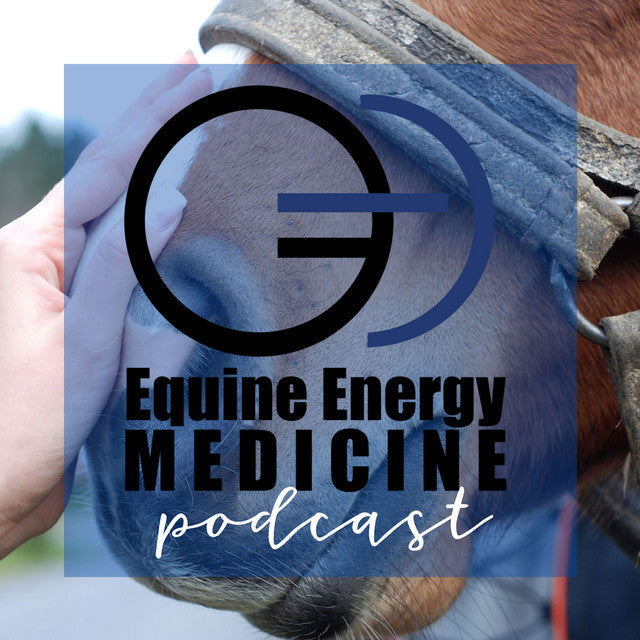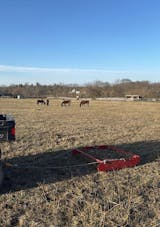10 Most Common Horse Illnesses and How to Treat Them

The health of your horse is your top priority and we know that it is a huge responsibility to look after your four legged friend, you want to ensure they are cared for in the best way so they live a long and happy life. But unfortunately, like us humans, horses can also get poorly from time to time and this is not uncommon.
It is important that you understand the common diseases that horses can contract, this way you can either prevent them from happening in the first place or try to catch them early and get the right treatment if they were to occur.
The most common diseases in horses are viral, bacterial, and parasitic and we have listed them below so you can get a better understanding of what to look out for.
Keep reading to find out the 10 most common illnesses in horses and how to treat them.
1 - Common Digestion Issues
Equine colic and Inflammatory bowel disease (IBD) are the most common digestive issues for horses. In fact, it is believed that ten percent of the equine population has contracted colic during its lifetime. Some of the common causes of colic are gas, intestinal impaction, overeating grain, sand ingestion, and parasite infection.
Symptoms of colic include loss of appetite, lying down, rolling around, a bloated stomach and diarrhoea. This can be treated with medication if the symptoms are mild, however, if severe colic occurs it may require surgery.
If you suspect your horse has colic, check its vital signs and call your veterinarian for advice and treatment. Unfortunately it is not always possible to prevent digestive issues in your horse, however, you can do things to lower the risk of your horse contracting a stomach issue, such as;
● Always have a fresh & clean water source available
● Avoiding feeding on sandy grounds
● Change your horse’s diet gradually.
● Have a good insect control program
IBD is made up of a collection of different diseases of the intestines, which is demonstrated by inflammatory cells. Even though there are several different types of IBD, common symptoms are similar to horses with colic and can be chronic weight loss, lack of appetite, fever, skin lesions, and diarrhoea.
There is not an exact cause for this disease, therefore, like colic, it is really tricky to avoid.

2 - Equine Influenza (Flu)
As with people, equine flu is a viral infection that attacks the upper respiratory tract. The infection is airborne and can occur when your horse comes into contact with another horse who has the virus. The symptoms are the same as that in humans, a relentless cough, runny nose, swollen lymph nodes and a fever.
The only real way to avoid your horse from getting sick is to keep them away from other horses who may be sick, try not to share water sources or you can get a vaccination. Although very contagious, equine flu is not so serious. Most vet’s will advise you to let the infection run its course and provide supportive care for your horse. Let your horse rest and keep it in a clean, well-ventilated stall or paddock, ensuring it has access to clean water and plenty of hay.

3 - Equine Herpesvirus (EHV)
Equine herpes is a viral infection that can cause respiratory difficulties and neurological problems. It is a highly contagious airborne virus that can be spread via direct contact with another infected horse. It can also be spread indirectly through shared equipment.
Early respiratory symptoms are generally fever, cough, nasal discharge and loss of appetite or neurological symptoms such as poor limb coordination and inability to pass urine or droppings. To prevent EHV, there are vaccinations available but these should only be used for healthy horses, not horses who are already infected.
If you think your horse is already infected, keep it away from all the other horses, especially pregnant mares (due to abortion) and call your vet for advice.
4 - Tetanus
Lockjaw, also known as tetanus, is one of the most serious bacterial diseases that affects the central nervous system of the horse. The tetanus bacteria, which is found in soil, enter the horse's body through scratches or small wounds and the most common symptoms include heightened sensitivity, muscle spasms on the face and jaw, and protruding eyelids.
To avoid the tetanus bacteria from affecting your horse, the best option is to get a tetanus vaccination and to properly treat any wounds your horse may have. For horses that are already infected, treatment can be antibiotics under veterinarian control.

5 - Common Skin Issues
Ringworm and Mud Fever are common skin infections in horses.
Ringworm is caused by a fungus. It spreads quickly from one horse to another. Infection shows initially as tufts of raised hair, which eventually fall off and leave lesions. To prevent ringworm, try not to use the same tack for different horses and pay attention to hygiene.
If a horse already has ringworm, the first action should be isolating it from the others. The infected horse can get treatment with an anti-fungal wash and clipping the infected hair. Ensure your horse's tack is cleaned properly.
Mud fever is caused by a skin infection that thrives in wet and muddy conditions.
Once infected, the skin of the legs and the stomach become inflamed and scaly, and the horse can develop a fever. To best avoid this skin issue, clean your horses legs after every workout by washing and drying properly. If you recognise mud fever on your horse, keeping the infected areas clean is the basis. Further treatment is to penetrate the causal organisms under the scabs under the control of a veterinarian.
6 - Equine Encephalitis
Also known as ‘sleeping sickness’, equine encephalitis is usually caused by mosquito bites and causes swelling and inflammation of the brain. This is a very dangerous disease which causes seizures and paralysis, hence the sleeping sickness nickname, and if contracted it is fatal to horses.
This can however be prevented by vaccination and is a must for the safety of your horse. It is also good practice to keep your horse's space protected from mosquitoes and other insects by using repellents or protective gear.

7 - Equine Protozoal Myeloencephalitis (EPM)
EPM is a neurological disease that affects the horse's brain and spinal cord, it can be contracted from a parasite due to eating infected faeces from hosts carrying the parasite such as opossum’s, skunk’s and domestic cats.
To prevent this from happening you should always store your horse's feed in covered bins and control your stable or barn area to keep these hosts away from where your horse lives and eats.
If your horse does happen to contract this parasite, then EPM can be treated by a 6 month course of antibiotics or a 28 day course of antiprotozoal, and of course it is always best to seek medical advice from your horse’s vet.
8 - Babesiosis
Babesiosis is a tick-borne protozoan parasitic disease affecting red blood cells in horses and other domestic mammals such as cows or dogs. It is a very harmful disease which causes fever, anaemia or weight loss, so it is advisable to see a vet as soon as possible if you suspect something is wrong or if your horse has been bitten by a tick.
The disease can last for about 10 days and can be fatal, especially in younger horses. In some cases, horses can develop chronic infections and become carriers for several years after the initial infection.
Babesiosis can often be confused with other conditions that cause fever, anaemia, destruction of red blood cells, or jaundice. Therefore, laboratory tests should be performed to confirm the diagnosis. There is no vaccine against this disease for horses but it can be treated by using one or a combination of effective antiprotozoal drugs and supportive care (such as intravenous fluids, anti-inflammatory medications, and blood transfusions).
To prevent ticks from biting your horse, periodic spraying and inspection of the horse can help reduce the chance of transmission.

9 - Strangles
A highly contagious upper respiratory tract infection, Strangles is caused by bacteria which infects the lymph nodes around the horse's jaw, causing them to become swollen. In severe cases, the throat can become so swollen that it causes breathing problems. Symptoms include, loss of appetite, difficulty eating, fever, nasal discharge and swollen jaw.
Strangles is endemic in the UK, meaning it is common within the horse population. Outbreaks cause major problems, particularly on big yards, as affected yards should not allow horses to leave or enter the premises during this period.
Strangles can be treated by supportive care and anti-inflammatory medication to treat the raised temperature and make your horse feel well enough to eat. Feeding your horse wet food from the floor also makes it easier for them to swallow and encourages the abscesses to drain. A hot compress on the abscesses will also help them to rupture. In rare cases, complications can occur and abscesses can develop within other body organs which can be fatal but this is only in 1% of cases. It is important to isolate your horse from infected horses and to ensure the virus does not spread across the yard. It is possible to get a vaccination which you can speak to your vet about.
10 - Laminitis
Laminitis is a common, extremely painful and frequently recurrent condition in horses causing inflammation and damage to the tissue around your horse’s hoof and pedal bone. It has significant welfare implications.
Laminitis often occurs due to diseases such as equine metabolic syndrome (EMS) or pituitary pars intermedia dysfunction (PPID, aka Cushing’s Disease), sepsis or systemic inflammatory response syndrome (SIRS). However, it can also be due to the outcome of excessive grain intake, access to pasture high in sugars, compensatory weight bearing, ingestion of toxic plants (such as black walnut shavings), and excessive work on hard surfaces, of which these can be prevented if caution is taken.
It is vital that you regularly check your horse’s hooves and have them checked by a vet if you notice anything unusual such as flat feet or bruised soles.
Disease prevention in horses relies on a combination of good biosecurity and vaccination, as an equestrian it is your responsibility to ensure your horse is properly cared for and has all the right vaccinations to protect it against certain disease and to stop it being a potential spreader.
Adopting good hygiene procedures like using dedicated stable equipment for each horse to help avoid the spread of infections, avoiding horse to horse contact and shared water at shows or events, if you handle another horse wash your hands before handling your horse again and disinfect stables and equipment, between horses, with disinfectants which are effective against viruses and bacteria.

Be vigilant in looking out for signs that your horse may be unwell by monitoring your horse’s health daily and always check with your vet. The earlier an infectious disease is diagnosed, the sooner the horse can be treated and isolated, helping to protect your horse and reduce the spread to other horses.




























